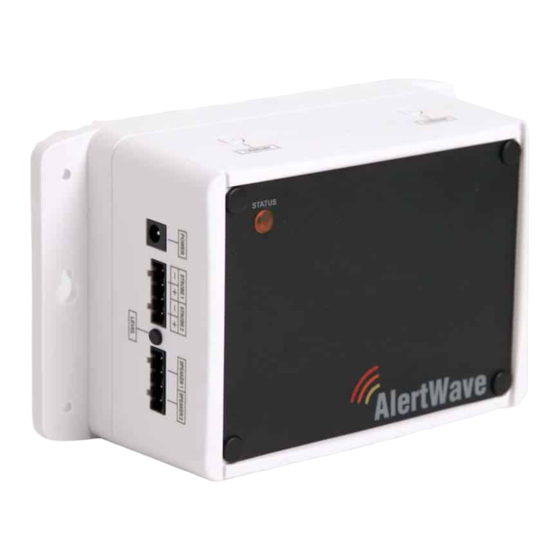
Advertisement
VNS2210 Break Bell Controller - Quick Installation Guide
Overview & Wiring Diagram
The VNS2210 Break Bell Controller is a sophisticated electronic device that can operate as a stand-alone bell controller or be
expanded utilizing its built-in wireless controller. The unit can provide live voice PA capabilities, emergency alerts, and
receive wireless time synchronizations when integrated with other Visiplex wireless products.
The VNS2210 is designed to provide a replacement solution when compared to old mechanical bell systems by utilizing high
power speakers to play simulated bell tones or voice alerts. Using its built-in bell schedule, the VNS2210 can initiate up to
48 bell alerts for each day of the week. Each bell event is fully programmable to provide full flexibility with the weekly bell
schedule design.
In the event that the VNS2210 is needed to control an old mechanical bell system, the unit is equipped with a built-in relay
switch that can be used to activate a mechanical bell according to the VNS2210's built-in schedule.
The VNS2210 comes with two speaker audio ports that can drive a variety of indoor/outdoor speakers with impedance of 4-
32 Ohms and rated power of 10-100 Watts.
Visiplex offers a variety of indoor/outdoor speakers that have been chosen to work specifically with the VNS2210. Other
wireless devices such as our VS4500 Wireless PA controller can provide wireless voice announcements through the VNS2210
speakers to add even more value to the bell system. Please visit the Visiplex website at
information.
Controller Installation
Follow these steps to install the VNS2210 unit:
1.
Determine the installation location for the VNS2210 device. Consider the following when determining the
installation location:
a.
A standard VNS2210 is equipped with an AC to DC power adaptor and requires a standard 110VAC or
220VAC power outlet. The power adaptor consists of a 6' DC power cable and a 6' AC power cord.
Consider these cable lengths and the distance between the power outlet and the VNS2210 device.
b.
The speaker's location could be up to 150' from the VNS2210 location when using a good quality speaker
cable.
c.
The VNS2210 devices should be protected from direct rain and snow, and if possible, from direct sun.
Outdoor installation should include an overhang or weather proof box to protect the VNS2210 device.
www.visiplex.com
for more
1
Advertisement
Table of Contents

Summary of Contents for visiplex VNS2210
- Page 1 In the event that the VNS2210 is needed to control an old mechanical bell system, the unit is equipped with a built-in relay switch that can be used to activate a mechanical bell according to the VNS2210's built-in schedule.
- Page 2 VNS2210. Connect one end of the supplied USB cable to the USB port on the VNS2210 and the other end into an open USB port on your PC. If the USB driver is installed correctly, a message will be displayed at the lower right side of your screen indicating the COM port that will be associated with the VNS2210.
- Page 3 To test the audio content of each built-in/user programmable bell alert, please use the following steps: Make sure the VNS2210 is powered, a speaker is connected to one of the unit's Speaker ports and that the unit is connected (via USB) to your PC. Then start the VPS application and make sure the VNS2210 is detected.
- Page 4 Programming Custom Audio Alerts The VNS2210 provides eight (Alert 01-Alert 08) built-in default bell tone and alert files that can be activated by each programmed event in the bell schedule. Up to 64 additional bell alerts (ALERT11-ALERT90) can be added by the user. To program the VNS2210 receivers with customized audio alerts (WAVE audio files), please use the following steps: Install the VPS software and USB drivers (see page 2).


Need help?
Do you have a question about the VNS2210 and is the answer not in the manual?
Questions and answers